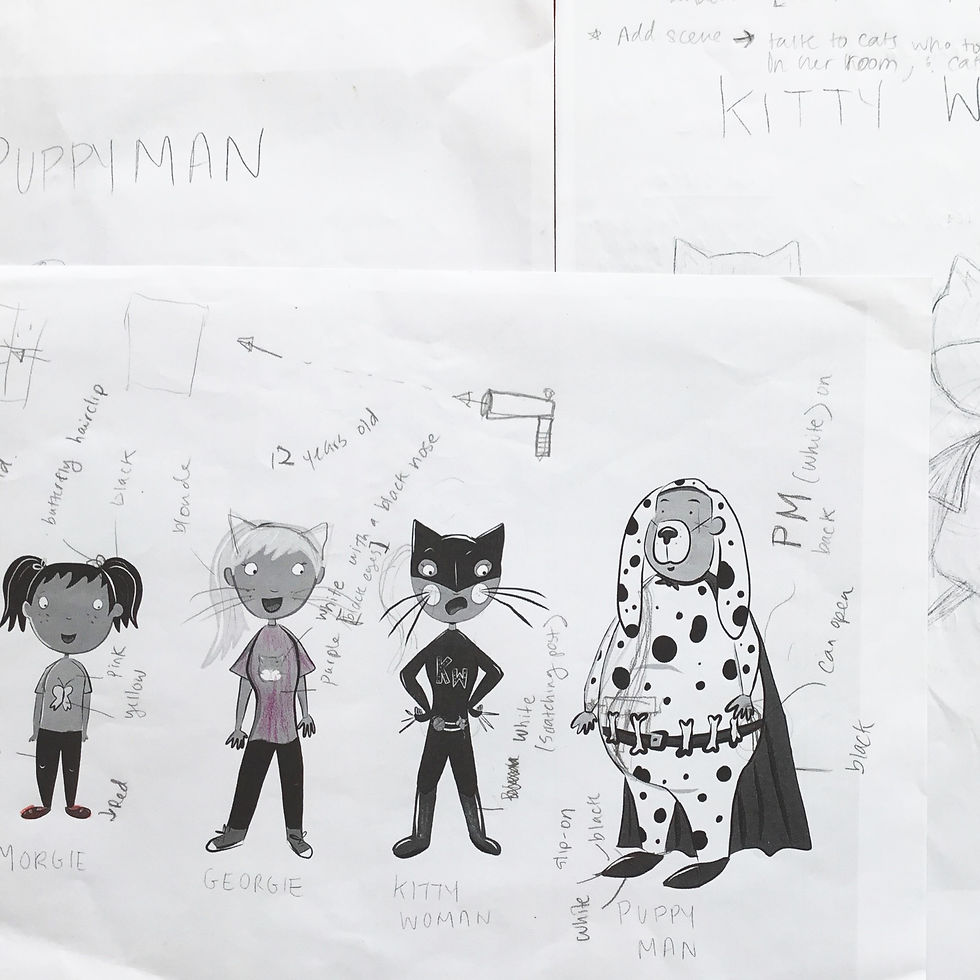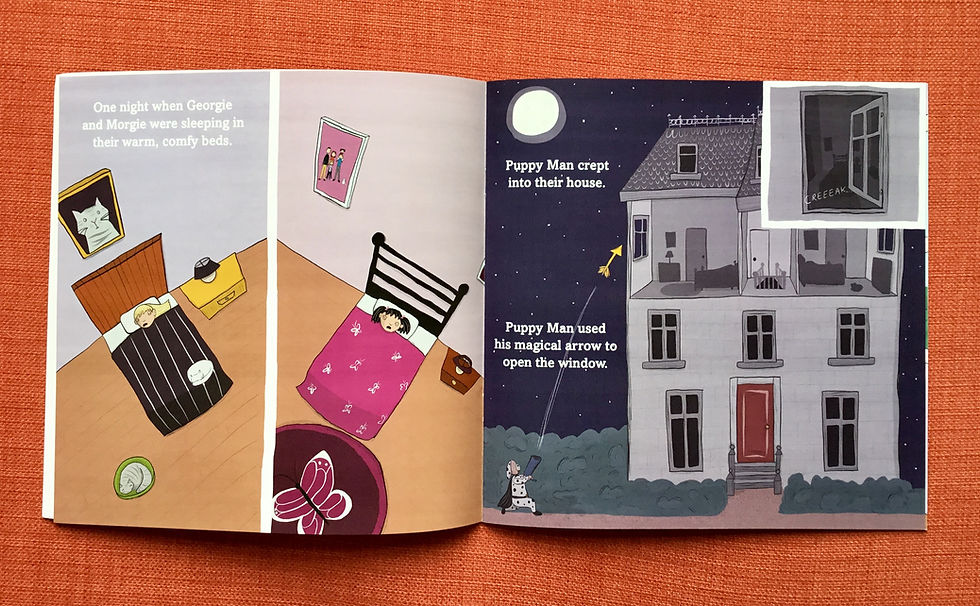
January 10, 2025
I’m not one to let go of things easily. I’m still driving the same car I had when I was 16. No matter how much my husband complains about its terrible suspension, I won’t let it go. Even as our brains rattle driving over SoCal’s endless potholes. It’s the same car I drove in my old town, through my old neighborhood, up to my old house.
Perhaps it’s expected—my dire need to hold onto old things. I study history after all.
My PhD was about old things. Houses, shops, furniture, clothing. They were things people had lost over 350 years ago. Some lost them in fires, many others because of looting. They wrote up lists, trying to remember every corner of their homes and workshops—trying to remember the precious items locked away in their chests and trunks.
I’ve read about fires so many times.
The Public Record Office of Ireland had gone up in a blaze during the civil war. Documents, history. Gone forever. This summer, I was looking through an old coroner's book. My husband’s ancestor had saved it from a burning pyre during that same war. I leafed through the yellowed pages. Every margin was packed with the hurried strokes of fading ink. A 90-year-old woman—her dress caught on fire.
The heavy, leather-bound book became this forbidding omen. Sitting on the brand-new blue carpet of my in-law’s house. I swear I could almost hear the quiet thumping of its heart—like a warning. Open it, and you’ll only find devastation.
My husband’s aunt looked at that same book without fear. We told her about the 90-year-old woman who died in the fire: “It’s terrible.”
“It’s life,” she replied simply, without an ounce of despair. The coroner’s book wasn’t recording deaths. It was recording lives.
I was always one to search for the silver lining. During my PhD research, I swallowed the tales of atrocity with a perpetual lump in my throat, searching for the moments when neighbors helped one another. In times of tragedy, they warned each other about what was coming. I know there was more of that than was ever written down.
I’ve had so many thoughts this past week. Watching my hometown burn. If my childhood home survives, will it be a historic building? Will it get a plaque nailed to its side quietly telling anyone who walks past that it survived?

“It used to be a thriving town, but after the fire it became a ghost town.” That was something I’ve read—about those old mining towns that exploded into existence after the Gold Rush.
I’ve read about fires so many times. So many times. As a historian, it is always a turning point. The point in our research where the yellow brick road breaks apart and tumbles into the sea. There is a blank space where the history would have been. We cannot write anymore, and we always wonder, “what if it hadn’t happened?”
I drove my old car to the market today. It rattled over the bumps and potholes. More precious that silly little car has become, with its broken window and busted speaker.
I keep telling myself: sometimes those towns don’t become ghost towns. Sometimes they rebuild. And neighbors help each other more than will ever be written down.

A pink circle with the text "memories" flashed across my phone screen. I tapped it, knowing that whatever Instagram was about to show me would haunt me.
It showed an image of a clay duck I had made—sitting in a barren wooden toolbox I bought to turn into its house. The date: exactly one year ago.

Was that really one year ago?
I looked over at the bench near my table. There the toolbox sat (or screamed as it was now firetruck red instead of a pale beige). I had painted it and added some furniture since that Instagram post. Its kitchen was nearly done, and its bedroom was only missing the final touches. But still, it was unfinished.
The Duck House joins a long list of unfinished projects that haunt my notebooks and paintbrushes. A book, another book, a painting, a collection of old papers, a fountain pen, a stack of notecards, a half-written novel...all reminders of grand ideas I had that I simply didn't complete.
For me, finishing projects is complicated. There is always something more pressing to attend to. And, when your project is building a miniature 19th-century house for your clay duck, you can understand why. Yes, something will inevitably feel more pressing than that.
But, there's always at least ten minutes of my day to spare, isn't there? Ten minutes to paint some wood, or cut up some construction paper, or mold a shape out of clay. Ten minutes.
And so, after many ten minutes, I present the (nearly finished) Duck House.



"In June 2017, Penguin Random House UK and Ministry of Stories launched seventeen unique new picture books, all written by children between the ages of 8 and 12 and brought to life by volunteer illustrators."
I was quite nervous when I met my author back in February. It is a truth universally acknowledged that children can be the toughest critics. I attempted to mentally prepare myself for the stinging honesty that I was likely to face.
On that Saturday morning in the Ministry of Stories' London workshop, my author looked at the character sketches that I had prepared. I waited in quiet anticipation.
"Do you like it?" I asked hesitantly
To my relief, she nodded.
Phew.
Once I began asking more specific questions, alterations began to form in her mind. The villain was too fat, the hero needed a different outfit, and I needed to add a few more objects to the utility belt. Without a doubt, this was her book. It was my job was to make sure it was perfect.

For every question I had, there was a quick reply. Entire backstories were invented on the spot. Almost instantly, my author had created an imaginative world for these characters. She knew their likes and dislikes. She knew exactly where they lived. She knew all about their family life and their childhood experiences.
As an illustrator, I was beaming. This was the kind of collaboration I dreamt of experiencing. We bounced ideas off of each other, made adjustments with confidence, and grew more and more excited about the project.

I wonder if this is a direction that children's literature can successfully grow. As I opened up the sixteen other books written by these young authors at the launch party last Friday, I was astounded by the variety and imagination that these stories captured. I laughed as I read how a fox ate so much fried chicken that he turned into it. I was charmed by the story of a miniature boy desperate to get to the moon who discovered that it didn't matter how small he was - if he used his brain, he could build a rocket to get there. The books provided a glimpse into each child's mind. They were embedded with cultural meaning and personal experience. They were the most interesting and humbly charming books that I had ever read.
I had an incredible experience illustrating for this Penguin Random House UK and Ministry of Stories project. To those amazing individuals from Penguin and the Ministry of Stories who worked to make this possible, I am so grateful to have been included.
And why stop here? Perhaps this really could be a new kind of picture book.

For more about this project check out: https://www.penguinrandomhouse.co.uk/media/news/2017/june/penguin-random-house-uk-and-ministry-of-stories-launch-17-unique/
To see all 17 books in all their downloadable PDF glory: http://www.penguinrandomhouse.co.uk/picturebookproject
For more on the Ministry of Stories and all their work promoting children's creativity: http://ministryofstories.org/















